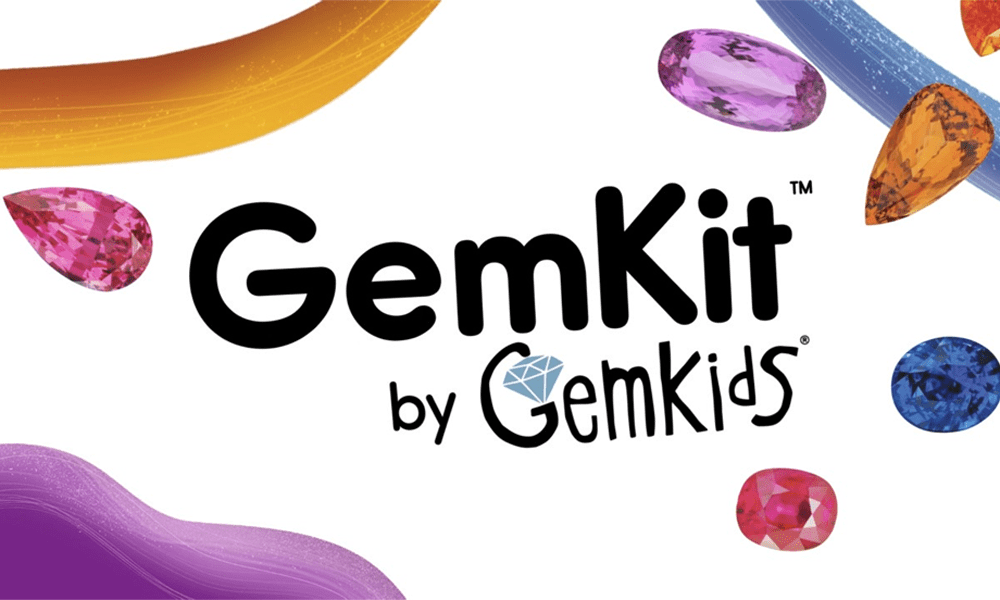Education
GIA’s GemKit brings gem science to classrooms worldwide

The Gemological Institute of America (GIA) has launched GemKit™ by GemKids®, a free digital learning program that brings the fascinating world of gems and minerals into classrooms and homeschools across the globe. Designed for students in grades 4–6, GemKit includes flexible, standards-aligned lesson plans, interactive activities, and an animated video series that fits seamlessly into earth science curriculums.
Building on over 20 years of educational outreach through its in-person GemKids programme in Carlsbad, California, GIA’s new digital offering provides educators with easy online access to engaging, expert-reviewed resources anytime, anywhere. The curriculum supports the U.S. Next Generation Science Standards and is suitable for both classroom and homeschool environments.
By bringing the wonder of gems and minerals into the digital classroom, GIA is helping students connect science with real-world fascination. GemKit represents a powerful step forward in making gemology education accessible, inspiring and fun for young learners everywhere.”
Teachers are already lauding the program’s quality and versatility. Melissa Muché, a fourth-grade teacher at Tri-City Christian School in California, said, “I am amazed at how it integrates subject matter and covers many fourth-grade standards across the board.”
GIA encourages educators, parents, and gem enthusiasts to explore GemKit and unlock the sparkling science of gems for students of all ages.
Education
The Science Behind Sparkle: How Lab-Grown Diamonds Are Created
A New Era of Diamond Creation

In recent years, lab-grown diamonds have captured the attention of jewellers, consumers, and investors alike. Beyond their beauty, what makes these gems truly fascinating is the science behind their creation. Unlike imitation stones, lab-grown diamonds share the same physical, chemical, and optical properties as natural diamonds — the only difference lies in their origin.
At the heart of this innovation are two cutting-edge processes: High Pressure High Temperature (HPHT) and Chemical Vapor Deposition (CVD). These methods recreate the intense conditions under which natural diamonds form deep within the Earth, allowing scientists to produce genuine diamonds in a controlled laboratory environment.
HPHT: Diamonds Born Under Extreme Conditions

The High Pressure High Temperature (HPHT) method mimics the natural diamond-forming process that occurs about 150 kilometers below the Earth’s surface.
- Starting Point – The Seed:
A small diamond seed, usually a thin slice of an existing diamond, is placed inside a carbon-rich chamber. - Simulating Nature – Pressure and Heat:
The seed is exposed to extreme conditions — pressures of about 5–6 GPa (equivalent to the pressure at the Earth’s mantle) and temperatures of 1,400–1,600°C. - Crystal Growth:
Under these conditions, the carbon source melts and crystallizes around the diamond seed, forming a larger crystal over several weeks.
The result is a high-quality diamond crystal that is virtually indistinguishable from its natural counterpart. HPHT diamonds often exhibit exceptional clarity and can be produced in a range of sizes and colors, including colorless, yellow, and blue varieties.
CVD: Diamonds Grown in a Plasma Cloud

The Chemical Vapor Deposition (CVD) process is a more recent innovation that uses advanced plasma technology to grow diamonds atom by atom.
- Preparing the Chamber:
A thin diamond seed is placed inside a vacuum chamber filled with carbon-rich gases, typically methane and hydrogen. - Creating Plasma:
The gases are energized using microwaves or lasers, forming a plasma cloud that breaks down the molecular bonds of the gases. - Diamond Formation:
Carbon atoms released from the plasma settle onto the seed layer, crystallizing into pure diamond over the course of several weeks.
The CVD method allows for greater control over purity, color, and size, making it ideal for high-end jewellery applications. It also produces diamonds that are free from many of the inclusions typically found in natural stones.
Technology Meets Sustainability

Both HPHT and CVD processes are transforming the jewellery industry not only through technology but also through sustainability. Lab-grown diamonds require no mining, dramatically reducing environmental impact. Many manufacturers are also transitioning to renewable energy sources to power their production facilities, making these diamonds even more eco-conscious.
Furthermore, traceability is a defining advantage. Every lab-grown diamond can be tracked from its creation, offering complete transparency — a growing priority among modern consumers seeking ethical luxury.
Crafting the Future of Jewellery

As consumer awareness grows, lab-grown diamonds are redefining what it means to own something precious. With their scientific precision, sustainable creation, and stunning beauty, they represent the perfect harmony between innovation and artistry.
-

 National News1 day ago
National News1 day agoANOR Redefines Luxury: Pioneering Premium Lab-Grown Diamond Jewellery for India’s Elite
-

 GlamBuzz2 days ago
GlamBuzz2 days agoTamannaah, Samantha, and Janhvi Kapoor Dazzle in Stunning Jewellery and Couture Moments
-

 GlamBuzz1 week ago
GlamBuzz1 week agoKushals Fashion and Silver Jewellery shines bright with Sanya Malhotra as its Brand Ambassador in the North and Priyanka Mohan in the South
-

 BrandBuzz3 days ago
BrandBuzz3 days agoWhen your Love Speaks its own Language, Seal it with Platinum Love Bands











